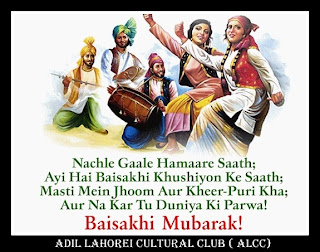Baisakhi Mela or Baisakhi Fair is one of the most colourful aspects of Baisakhi celebrations in the state of Punjab. One can find vivid and vibrant colours of life in rural Punjab in such fairs. Happy with the harvest and the ensuing prosperity, men and women dress themselves in their fanciest clothes and participate in the Baisakhi fair with joy and gusto. Various activities have been incorporated in Baisakhi fairs to give people a chance to let their hair loose and enjoy the spirit of life and inner freedom.
Baisakhi Fairs are extremely popular amongst the people of Punjab. People come with their family and friends to participate in fairs from far off places. Most fascinating features of Baisakhi Mela are bhangra and gidda performances. Other activities that enthrall people are races, wrestling bouts, singing and acrobatics. Performance of folk instruments, such as vanjli and algoza is also quite popular.
More colours are added to Baisakhi Fairs by the numerous stalls selling bangles, toys, local handicrafts and other trinkets of domestic use. Food stalls are also a major crowd-puller in a Baisakhi Mela.
Baisakhi is an ancient festival dating back to the 17th century, also marks the beginning of a new solar year and harvest season. It is one of the most significant holidays in the Sikh calendar, commemorating the establishment of the Khalsa at Anandpur Sahib in 1699 by the 10th Sikh Guru, Guru Gobind Singh.
To mark the celebrations, devotees, irrespective of Sikh religion, throng at Gurdawara. The celebrations start when devotees with flowers and offerings in their hands, proceed towards the Gurdawaras and temples before dawn.
Every year, a large number of Sikh Yatrees (pilgrims) arrive in Hasan Abdal, which is located 60 kilometers in the west of Islamabad, and mark the festival with great zeal and zest.
According to Sikh historians, in 1521, the founder of the Sikh faith, Guru Nanak arrived in Hasan Abdal; sat under the shade of a tree, and started singing Kitran as his devotees gathered around him.
At first, he got severe opposition from a local saint, Shah Wali Qandhari, but it was his charismatic personality that his rival also converted to Sikhism. The Panja Sahib Gurdawara is believed to be built on the spot where the Guru stayed .It also contains a sacred rock that has the handprint of Guru Nanak.
if u want to see more pictures then join facebook Adil Lahorei




